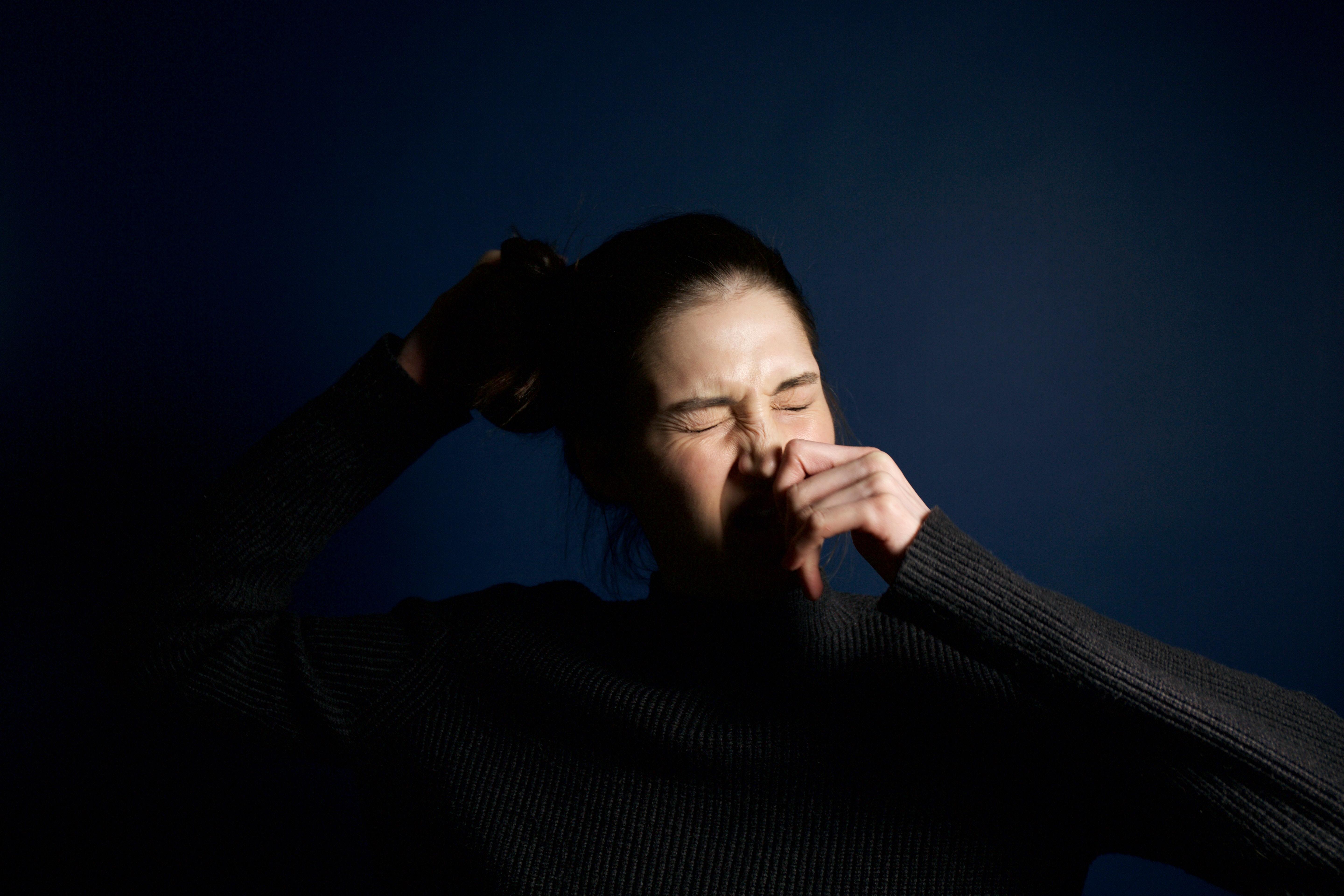Cool Mist vs Warm Mist Humidifier for Sinus Problems: Which is better?

BeCalmingHaven / Amazon
Cold weather is a herald of breathing problems, which often include congested sinuses.
This usually means symptoms like: tenderness/pressure around the nose, cheeks, and forehead regions, runny/stuffy noses, coughs, fatigue, and in some instances body aches!
Regulating humidity does help in clearing the congestion but one question remains – is a warm or cool mist humidifier better for sinus problems?
More...
The Bottom Line:
Structure of Sinuses and how they work
Sinuses are narrow chambers lined with mucous membrane that constantly produces mucus.

There are four pairs of sinuses distributed around the nose and eyes.
Mucus slowly inches down the throat to carry away bacteria and dirt; we swallow mucus without even realizing it!
It’s when the mucus inside them stops flowing that bacteria grows out of control and causes infection.
A runny nose is a sign that one or more of our sinuses has been infected by bacteria.
With inflammation and swelling, mucus is blocked from flowing which then drips down the nose.
Inside the sinuses, mucus is a host to any number of fungi and bacteria that we gather by just breathing air.
These intruders are normally carried away but if the mucus slows down, we experience a sinus congestion when harmful bacteria or fungi overpowers all others.
Once the mucus starts flowing again, the congestion is cleared, the bacteria imbalance resolved and we can breathe a sigh of relief.
So how does this tie in with humidity?

Effect of humidity on Sinuses
It’s been well established in medicine that humidity has a positive effect on airways.
When we breathe in moist air, the mucus inside the sinuses, windpipe and lungs flows faster.
This carries away all the bacteria and debris (the ones we mentioned above!) before infections and inflammation can set in.
Optimal mucociliary clearance is achieved at 98.6°F and 100% relative humidity.
Professor Achim G. Beule
And at a temperature of 98.6°F (37°C) and a relative humidity of 100%, a 2011 German study suggests that our airways are best able to do just that!
Humidity definitely helps our airways stay clean and clear, which leads to the question: What’s the difference between cold and warm air on our airways?
Let's look at what research says on the matter.
Effect of cool mist vs warm mist on our airways
A 2018 study done at the Turkish clinic for chest diseases looked at the effects of humidification on two types of patients:
For COPD patients, the main problem was in production of sputum. These are excretions from the airways that worsens inflammation and causes even more trouble breathing. This is especially so when COPD patients are given oxygen for at least 15 hours a day (their standard care).
For OSAS patients, the main problem is interruption of breathing during sleep, which wakes them up and causes sleepiness during daytime.
How does cold air affect airways?
How does warm air affect airways?
Researchers found that humidification was beneficial for patients who had invasive ventilation but is not significantly different for humidifiers dispersing mist into the air.
Moreover, “patients who might benefit more from the humidification therapy are the ones who present or complain about upper airway symptoms”.
The long story short?
Humidifiers were better for patients having trouble with sinuses rather than with those with lung issues. Moreover, warm mist gave greater comfort if directly supplied to the body.
Effect of cold and warm air on congestion
Another 2017 German study showed that out of 20 patients who had surgery on their windpipe, those with heated humidification required 60% less cleaning than those on cold humidification.
Those patients were asked to use humidifiers for at least 8 hours a day over two weeks. This was because after the windpipe surgery, their bodily mechanism for warming and humidifying the air stopped working.

Healthcare workers helped patients when they complained about a clogged windpipe and also took swabs of their throats to detect the speed of mucus flow.
After mere 2 days, patients with warm air humidification had a 50% faster mucus flow.
In all other cases where cold and hot air humidification were compared, the latter always proved superior.
Putting it all together - Cool mist vs warm mist humidifier for sinus problems
So, which is better: a warm mist vs cool mist humidifier for sinus problems? Both are no different.
Humidification is the key factor in helping us ease discomfort, reduce swelling, and clearing inflammation. It has an overall positive impact on our entire airways!
Those with chronic breathing problems also generally receive greater quality of life and comfort from warm humidification than cold humidification.

BeCalmingHaven / Amazon
Warm humidification also helps in the long run by keeping our core temperature high.
Cold air has a definite detrimental effect on the sinuses, which is easily seen during winter.
When the air is cold, the capillaries in the nose and sinuses expand as warm blood rushes in. This worsens the congestion and makes mucus flow out slower.
Given that medical professionals focus more on the "lower airways" (which means the lungs) than the "upper airway" (which includes the sinuses"), more research is needed to provide a more definitive answer as to whether warm or cool mist humidifiers are better for sinuses.
However, if you have serious breathing issues, it’s likely the problem is in the lungs, not sinuses.
Conclusion
For daily use, a cool and warm mist humidifier would be equally good once the mist reaches your body.
However, for daily use, a cool and warm mist humidifier would be equally good once the mist reaches your body.
Ultimately, choosing a cold or warm air humidifier for your sinuses has more to do with your comfort than anything else.
A humidifier that provides you and your sinuses with the greatest amount of comfort and the least amount of maintenance will leave you perfectly happy, no matter what you choose!
